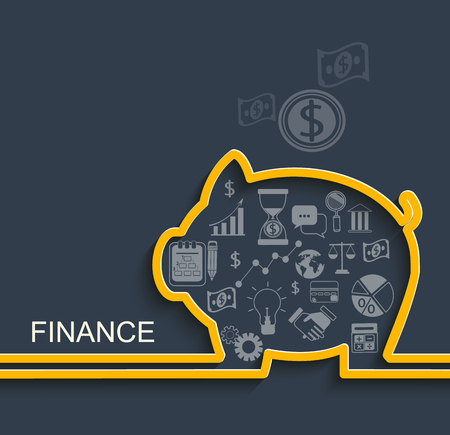1. Introduction
When it comes to investing, two major options stand out: private equity and public markets. Each offers unique opportunities and challenges, attracting different types of investors based on their goals, risk tolerance, and investment horizons. Understanding the differences between these two asset classes is crucial for making informed investment decisions.
What Is Private Equity?
Private equity (PE) refers to investments made in private companies that are not publicly traded on stock exchanges. These investments are typically managed by private equity firms that acquire, restructure, or grow businesses before selling them for a profit. Investors in private equity funds often include institutional investors, high-net-worth individuals, and pension funds.
What Are Public Markets?
Public markets consist of stocks, bonds, and other securities that are traded on exchanges like the New York Stock Exchange (NYSE) and Nasdaq. These assets are available to individual and institutional investors alike, offering liquidity and transparency due to regulatory oversight.
Key Differences Between Private Equity and Public Markets
| Feature | Private Equity | Public Markets |
|---|---|---|
| Liquidity | Illiquid; investments are held for years before exit | Highly liquid; can buy/sell shares instantly |
| Investment Horizon | Long-term (5-10 years) | Short to long-term (flexible) |
| Risk Level | Higher risk due to lack of transparency and market fluctuations | Varied risk levels depending on asset type |
| Payout Potential | Payouts occur after company exits or IPOs | Earnings through dividends or capital appreciation |
| Regulation & Transparency | Lesser regulation; limited public disclosures | Tightly regulated with mandatory disclosures |
(1) Why Do Investors Choose Private Equity?
Investors who opt for private equity are often looking for higher returns over an extended period. They may also have access to exclusive investment opportunities not available in public markets. Additionally, private equity firms actively manage their portfolio companies, seeking to improve operations and maximize profitability before exiting.
(2) Why Do Investors Choose Public Markets?
The appeal of public markets lies in their liquidity, diversification, and accessibility. Investors can enter or exit positions quickly while benefiting from market transparency and regulatory protection. Stocks and bonds also provide options for income generation through dividends and interest payments.
(3) Choosing Between Private Equity and Public Markets
The decision between private equity and public markets depends on an investor’s financial goals, risk tolerance, and time horizon. While private equity offers the potential for substantial long-term gains, it requires patience and a willingness to commit capital for several years. On the other hand, public markets provide flexibility, allowing investors to adjust their portfolios based on market conditions.
Liquidity and Investment Horizon
One of the biggest differences between private equity and public markets is liquidity. Investors need to consider how quickly they can access their money and the time commitment required for each type of investment.
Private Equity: Long-Term and Illiquid
Private equity investments are typically long-term commitments, often requiring investors to hold their capital in a fund for 7 to 10 years. These investments are illiquid, meaning investors cannot easily sell their stakes before the investment cycle ends. This long-term horizon allows private equity firms to focus on business growth and strategic improvements without worrying about short-term market fluctuations.
Key Characteristics of Private Equity Liquidity
- Limited ability to sell investments before maturity
- Funds are locked up for several years
- Returns realized only after an exit event (e.g., acquisition or IPO)
Public Markets: Daily Liquidity and Flexibility
Public market investments, such as stocks and bonds, offer daily liquidity. Investors can buy or sell shares at any time during market hours, making it easier to adjust portfolios based on market conditions or personal financial needs. This flexibility allows investors to react quickly to economic trends and reallocate assets as needed.
Key Characteristics of Public Market Liquidity
- Assets can be bought and sold instantly
- Prices fluctuate throughout the trading day
- No long-term commitment required
Liquidity Comparison: Private Equity vs. Public Markets
| Factor | Private Equity | Public Markets |
|---|---|---|
| Liquidity | Illiquid – funds locked for years | Highly liquid – daily trading available |
| Investment Horizon | Long-term (7-10 years) | Short-term or long-term (flexible) |
| Exit Strategy | Mergers, acquisitions, or IPOs | Selling shares anytime in the market |
| Market Sensitivity | Less affected by daily volatility | Affected by market fluctuations daily |
(1) Choosing the Right Investment Based on Liquidity Needs
If you prefer flexibility and easy access to your funds, public markets may be the better choice. However, if you are willing to commit your capital for a longer period in exchange for potentially higher returns, private equity could be a valuable addition to your portfolio.
(2) Balancing Liquidity with Long-Term Growth Potential
A well-diversified portfolio may include both private equity and public market investments. While public markets provide liquidity, private equity can offer opportunities for substantial long-term gains.
Understanding the liquidity and investment horizon differences between private equity and public markets helps investors make informed decisions based on their financial goals and risk tolerance.

3. Risk and Return Profiles
When comparing private equity (PE) and public markets, one of the most important factors to consider is the risk and return profile. Both investment types offer unique opportunities, but they also come with different levels of volatility, leverage, and historical performance.
Volatility Comparison
Private equity investments tend to have lower short-term volatility compared to public markets. This is because PE assets are not traded daily, meaning their valuations are less impacted by market sentiment or short-term economic fluctuations. In contrast, public stocks experience frequent price swings based on market news, investor sentiment, and macroeconomic factors.
| Factor | Private Equity | Public Markets |
|---|---|---|
| Short-Term Volatility | Lower (due to infrequent valuations) | Higher (due to daily trading) |
| Sensitivity to Market Fluctuations | Lower | Higher |
| Liquidity Impact | Illiquid (long holding periods) | Highly liquid (can buy/sell anytime) |
The Role of Leverage
Leverage plays a significant role in both private equity and public markets, but it is used differently:
(1) Private Equity Leverage
PE firms often use high levels of debt to acquire companies, aiming to increase returns through financial engineering. This strategy can amplify gains but also increases financial risk if the acquired business underperforms.
(2) Public Market Leverage
Public companies may also use debt financing, but they are generally subject to stricter regulations and transparency requirements. Individual investors can use margin accounts to leverage positions, but this increases exposure to market fluctuations.
Historical Performance Trends
The long-term performance of private equity has generally outpaced public markets, although this comes at the cost of higher illiquidity and longer investment horizons.
| Investment Type | Average Historical Returns (Annualized) | Main Considerations |
|---|---|---|
| Private Equity | Around 10-15% | Iliquid, long lock-up periods, higher fees |
| S&P 500 (Public Stocks) | Around 7-10% | Easier access, lower fees, daily liquidity |
The decision between private equity and public markets depends on an investor’s risk tolerance, liquidity needs, and investment horizon. While PE offers potentially higher returns with lower day-to-day volatility, it requires patience and a willingness to accept longer lock-up periods.
4. Access and Participation
When considering investments in private equity versus public markets, one of the most significant differences is accessibility. Private equity has high barriers to entry, while public markets are open to virtually anyone with a brokerage account.
Key Barriers to Entry in Private Equity
Private equity investments are typically restricted to accredited investors and institutions due to regulatory requirements and the complexity of these investments. Here are some key barriers:
(1) Accreditation Requirements
In the U.S., investors must meet specific financial criteria to qualify as accredited investors, such as having an annual income of at least $200,000 ($300,000 for joint filers) or a net worth exceeding $1 million (excluding their primary residence).
(2) High Capital Commitments
Private equity funds often require significant initial investments, sometimes in the millions, making them inaccessible to average retail investors.
(3) Long Lock-Up Periods
Investors in private equity typically commit their capital for extended periods—often 7 to 10 years—limiting liquidity compared to public markets.
Accessibility of Public Markets
Public markets offer a much more inclusive investment environment, allowing individuals of all financial backgrounds to participate. Some key advantages include:
(1) No Accreditation Required
Anyone can buy stocks or ETFs through a brokerage account without needing to meet income or net worth thresholds.
(2) Low Minimum Investment
With fractional shares and commission-free trading platforms, investors can start with as little as a few dollars.
(3) High Liquidity
Unlike private equity, public market investments can be bought and sold instantly during market hours.
Comparison Table: Private Equity vs. Public Markets Accessibility
| Factor | Private Equity | Public Markets |
|---|---|---|
| Accreditation Requirement | Yes (Accredited Investors Only) | No (Open to All) |
| Minimum Investment | High (Often Millions) | Low (Few Dollars Possible) |
| Liquidity | Low (Capital Locked for Years) | High (Instant Buy/Sell) |
| Access Method | Through Private Funds & Firms | Through Brokerage Accounts & Exchanges |
Which Option Is Right for You?
If you have substantial capital and are willing to commit long-term, private equity may offer attractive returns. However, if accessibility and liquidity are priorities, public markets provide a more flexible and inclusive investment option.
5. Investment Strategies and Considerations
When investing in private equity or public markets, investors use different strategies to maximize returns and manage risk. Understanding these approaches can help you determine the best fit for your financial goals.
Private Equity Investment Strategies
Private equity investors take a hands-on approach, often working directly with portfolio companies to drive growth and increase value before exiting their investment.
(1) Buyouts
Buyout firms acquire controlling stakes in companies, restructure operations, and seek to improve profitability before selling or taking them public.
(2) Venture Capital
Venture capital firms invest in early-stage startups with high growth potential, providing funding and strategic guidance to help businesses scale.
(3) Growth Equity
This strategy focuses on investing in established companies that need capital to expand without giving up full control.
(4) Distressed Investing
Investors buy underperforming or struggling companies at a discount, aiming to turn them around for a profit.
Public Market Investment Strategies
Public market investments are more liquid and accessible, allowing investors to use various strategies depending on their risk tolerance and financial goals.
(1) Index Investing
A passive strategy where investors buy index funds that track market benchmarks like the S&P 500, offering diversification with lower fees.
(2) Active Management
Fund managers actively buy and sell stocks based on research and market trends to outperform index benchmarks.
(3) Dividend Investing
This approach focuses on stocks that pay regular dividends, generating income while potentially benefiting from capital appreciation.
(4) Growth vs. Value Investing
Growth investing: Targets companies with high revenue growth potential.
Value investing: Focuses on undervalued stocks expected to increase in price over time.
Comparing Private Equity and Public Market Strategies
| Aspect | Private Equity | Public Markets |
|---|---|---|
| Main Strategy | Direct investment in private companies | Buying publicly traded securities |
| Risk Level | Higher (illiquid, long-term) | Varied (from low-risk index funds to high-risk stocks) |
| Payout Structure | Lump sum upon exit (e.g., IPO, sale) | Diversified returns through dividends and stock appreciation |
| Investor Involvement | Active role in company decisions | Mainly passive (unless using active management) |
| Typical Investors | Institutional investors, high-net-worth individuals | The general public, institutional investors |
Selecting between private equity and public markets depends on your risk appetite, liquidity needs, and investment horizon. Both offer unique opportunities for wealth creation when used strategically.


